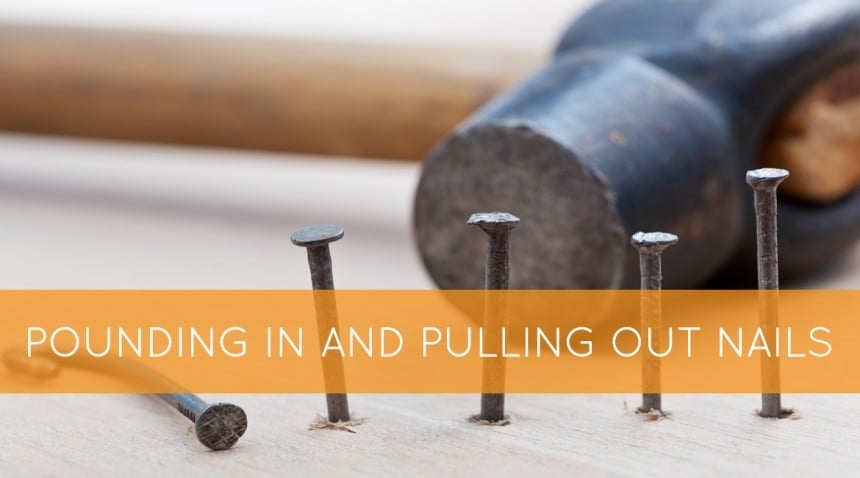When my daughter was confronted with the fact that she had really hurt another child with a mean comment, she cried and immediately wanted to apologize. That was a good thing, but I wanted her to know an apology can’t always make things better. So I told her the parable of Will, a nine-year-old whose father abandoned his mom two years earlier. Will was angry, and he often would lash out at others with hurtful words. He once told his mom, “I see why Dad left you!”
Unable to cope with his outbursts of cruelty, she sent Will to spend the summer with his grandparents. His grandfather’s strategy to help Will learn self-control was to make him go into the garage and pound a two-inch-long nail into a four-by-four board every time he said a mean and nasty thing. For a small boy, this was a major task, but he couldn’t return until the nail was all the way in. After about ten trips to the garage, Will began to be more cautious about his words. Eventually, he even apologized for all the bad things he’d said.
That’s when his grandmother came in. She made him bring in the board filled with nails and told him to pull them all out. This was even harder than pounding them in, but after a huge struggle, he did it.
His grandmother hugged him and said, “I appreciate your apology and, of course, I forgive you because I love you, but I want you to know an apology is like pulling out one of those nails. Look at the board. The holes are still there. The board will never be the same. I know your dad put a hole in you, but please don’t put holes in other people; you are better than that.”
*A fourth-grade teacher recently told me how she tells this story to her class in the beginning of the semester and uses it throughout the year. When she comes upon a child saying or doing a mean or unkind thing, she will say, “Did you put a nail in someone?” Then she’ll ask, “Did you take it out?”
She says her students always know what she’s talking about and recognize what they did was wrong, which isn’t always the case if she simply asks the child what happened (that usually results in a string of blaming everyone else).
She urges her students not to use the automatic “That’s all right” after an apology because usually what was done was not all right and the person saying it, rightfully, doesn’t feel it was all right. She tells her class to say “I accept your apology” or “I forgive you” instead.
The teacher also uses the story to help her kids understand difficult family matters outside of the classroom. She tells them some people will never take out the nails they’ve pounded into the children, but everyone has the power to pull them out themselves and get on with their life rather than let others rule them.
She told me, “The story is simple, but the message is powerful – especially when reinforced with: “You’re better than that!”
Remember, character counts.
Michael Josephson
www.whatwillmatter.com

